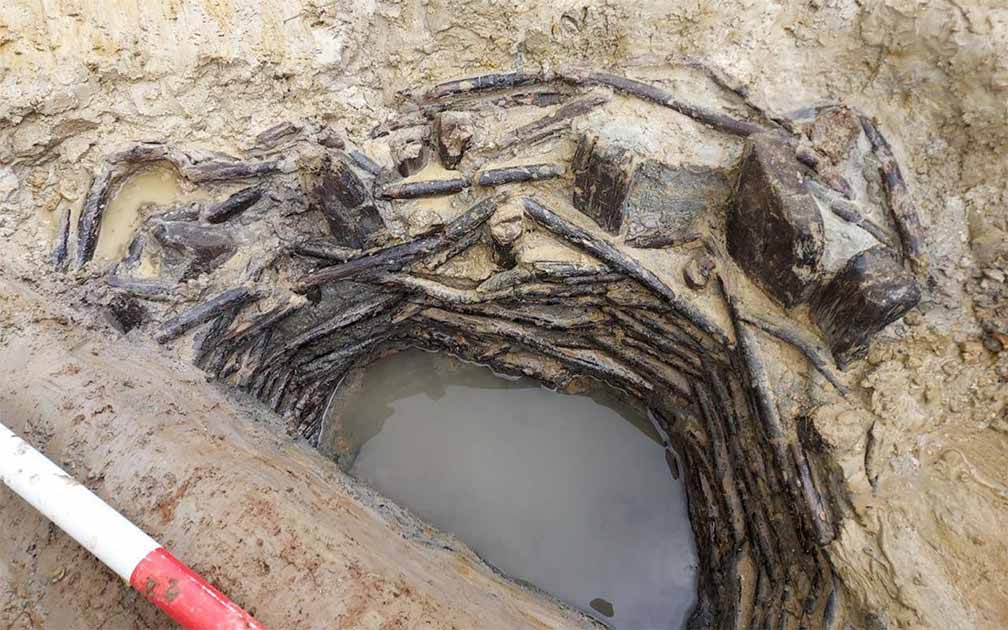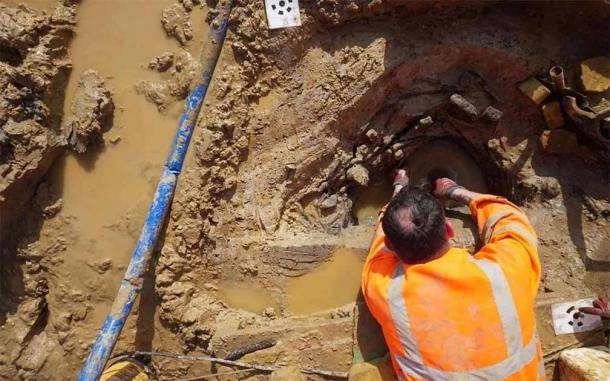During the construction of the Benson Relief Road in Oxfordshire, Oxford Archaeology made a significant discovery—a well-preserved wooden well dating back to the Bronze Age. This find, excavated on behalf of Oxfordshire County Council, offers a rare glimpse into the ancient past, providing valuable insights into the land use and agricultural practices of the time.
Discovery and Excavation Process
The discovery occurred during a mandatory archaeological assessment required for the road construction project. The process involved a meticulous "strip, map, and sample" method, ensuring that any archaeological elements were carefully recorded. John Boothroyd, the senior project manager, noted that the excavation was performed under extremely challenging conditions, highlighting the team's dedication to preserving historical artifacts.
Archaeologists from Oxford Archaeology excavation the well. (Oxford Archaeology/Oxfordshire County Council)
Archaeological Insights and Importance
The well is believed to have been used primarily for agricultural irrigation, aiding nearby settlements. Judy Roberts, the cabinet member for infrastructure and development strategy, emphasized the well's importance, stating, "It gives us fantastic insight into the area’s past land use." This find not only sheds light on the Bronze Age's agricultural practices but also enriches our understanding of the region's historical landscape.
The preservation of wooden structures from this period is exceptionally rare, and the survival of this well is attributed to its waterlogged environment, which protected the wood from decay. The excavation team managed to expose and fully record the well, despite the challenging conditions. They collected specialized soil samples that will help reconstruct the surrounding landscape and determine the extent of human settlement during the well's use.
Further Analysis and Preservation
The timber structure was carefully documented digitally before being dismantled by hand and removed from the site for further analysis. A wood sample was sent for analysis to identify the type of wood and the tools used in its construction. This could provide additional information on the technological capabilities and resource utilization of the Bronze Age people.
In addition to the well, archaeologists found various artifacts such as struck flint, animal bones, and pottery used for storage and waste, indicating a broader use of the site over time. These findings will be stored with the Oxfordshire Museum Service, ensuring their preservation and availability for future research and public education.
The excavation of the Bronze Age wooden well by Oxford Archaeology not only highlights the rich historical tapestry of Oxfordshire but also underscores the critical role of archaeological surveys in modern construction projects. By carefully balancing development with the preservation of our ancient heritage, we continue to learn from and appreciate the complexities of human history. This project serves as a reminder of the intricate connection between our past and present, as every new discovery brings us closer to understanding the lives of those who walked the earth millennia before us.








